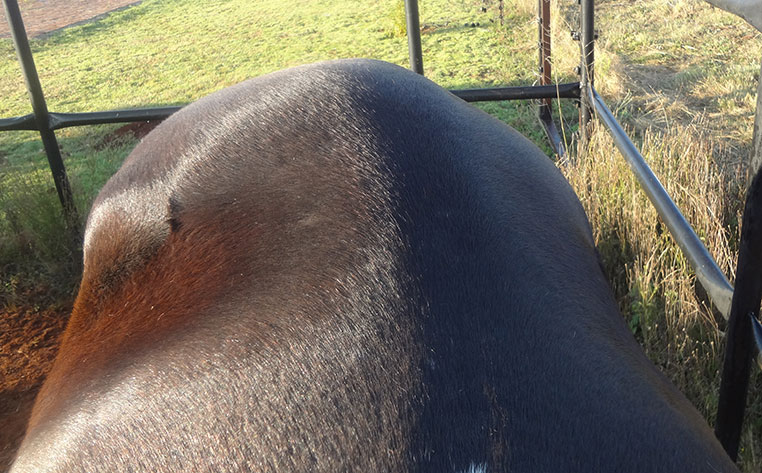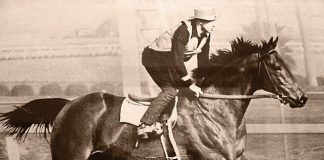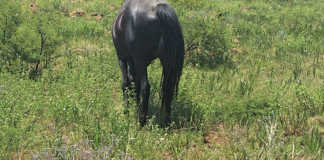
The sacroiliac is the joint between the sacrum (the end part of the horse’s spine) and the ilium bones of the pelvis. It is hidden beneath the large gluteal muscles on the top of the horse’s rump.
This area has two pairs of ligaments that can cause pain if damaged. The deep ventral ligaments stabilise the sacroiliac joint, and the dorsal sacroiliac ligaments run over the top of the sacrum, forming the anchor between the ilium and the sacral spine.
This remarkable structure holds the spine tightly to the pelvis. Most injuries in this region occur because of uneven stress applied to the pelvis.
A sacroiliac injury should be suspected when a horse exhibits the following signs and behaviour:
- A hind-end lameness that cannot be traced to joints or soft tissue lower down the leg;
- Pain in the lower back and sacrum when this area is massaged;
- It has been involved in a high-risk sport or training programme, or was seen to slip and fall at pasture;
- It can manage only a poor bascule over fences, jumps long, refuses to jump, or stops in combinations;
- It demonstrates a loss of speed on the flat, is difficult to collect, or ‘strung out’ at the canter;
- It clearly prefers one lead and frequently cross-canters.
Treatment
Once a diagnosis has been made, prognosis largely depends on the extent of the problem. Because sacroiliac area injuries usually involve one or more ligaments, recovery will always be fairly prolonged, ranging from six to eight weeks for problems caught early, or up to many months for more serious injuries.
First, get the inflammation under control. Your vet may recommend a course of systemic anti-inflammatories (phenylbutazone or flunixin) or local injections (corticosteroid). Because they can slow healing and result in ligament weakness, corticosteroid injections should not be administered repeatedly, however.
Once the initial inflammation is under control, the horse should be kept moving. Some vets administer periodic injections to help with low-grade pain or inflammation during rehabilitation, as these may help the horse work through the programme to achieve the best possible flexibility.
Ultimately, time is the main requirement for successful treatment.
Although severe injuries can certainly limit a horse’s future career, especially in demanding sports, many horses that fail to return to their original work do so simply because they are not given enough time to recover.
Prevention
You can minimise trauma to this area by doing the following:
- Always work the horse for an equal period in both directions and at all gaits. My horses change leads on their own every five minutes, so entrenched is the habit.
- Every two to four weeks, ask a bodyworker to check the horse for evidence of uneven muscling.
- Be alert to signs that the horse is not pushing off on one lead or diagonal as well as on the other. An alert rider can pick up this asymmetry before it’s evident to the eye as a gait change.
- Check the wear of the hind shoes. Compare right with left and lateral with medial. With your farrier, walk the horse on a flat, level surface after trimming to make sure the hind feet land perfectly square before reapplying shoes.Finally, remember that if your horse feels pain in one hind leg, the opposite hind leg will be overloaded. Equally, a problem with a foreleg causes overloading of the diagonal hind leg.
Kim Dyson breeds Arabians and Lusitanos, and has 22 years’ experience in holistic equine and human bodywork.













